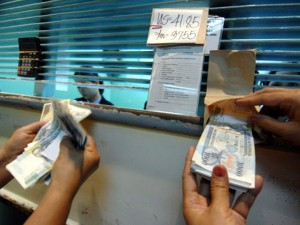PH ends 2013 with $5.08-B BOP surplus
The country posted a surplus in its foreign income position for the ninth consecutive year in 2013 amid the continued growth of remittances from migrant workers and increased revenue from tourism and the business process outsourcing (BPO) sector.
Documents from the Bangko Sentral ng Pilipinas (BSP) showed that the Philippines posted a balance-of-payments (BOP) surplus of $5.085 billion last year.
This was, however, the lowest annual BOP surplus for the country since 2009 when the surplus reached $6.42 billion.
The country’s BOP surplus also declined for the third straight year. After peaking in 2010 at $14.31 billion, the country’s BOP surplus declined to $11.4 billion in 2011 and $9.24 billion the year after. Despite the decline, the country has been posting a BOP surplus since 2005.
The end-2013 surplus is also lower than the government’s projection of $5.3 billion.
Article continues after this advertisementThe BOP position is a summary of all the money coming in and going out of the country every year. A surplus means more foreign money came in than the amount that went out. Remittances from overseas Filipino workers (OFW) are the country’s biggest source of foreign exchange.
Article continues after this advertisementOFW remittances are expected to rise by at least 5 percent to a record high $22.5 billion this year. In 2014, remittances are also projected to grow by 5 percent.
Investments, both in the form of portfolio or “hot money” flows and direct investments, are also counted in the BOP.
Hot money inflows for 2013 reached $4.3 billion, better than the projected $3.2 billion for the year, despite massive selling of Philippine assets in the second semester as investors fled to advanced markets like the United States.
A net outflow in “hot money” of $354 million was registered for the month of December alone, accounting for the decline in the December BOP surplus to $419 million from $837 million the month before.
